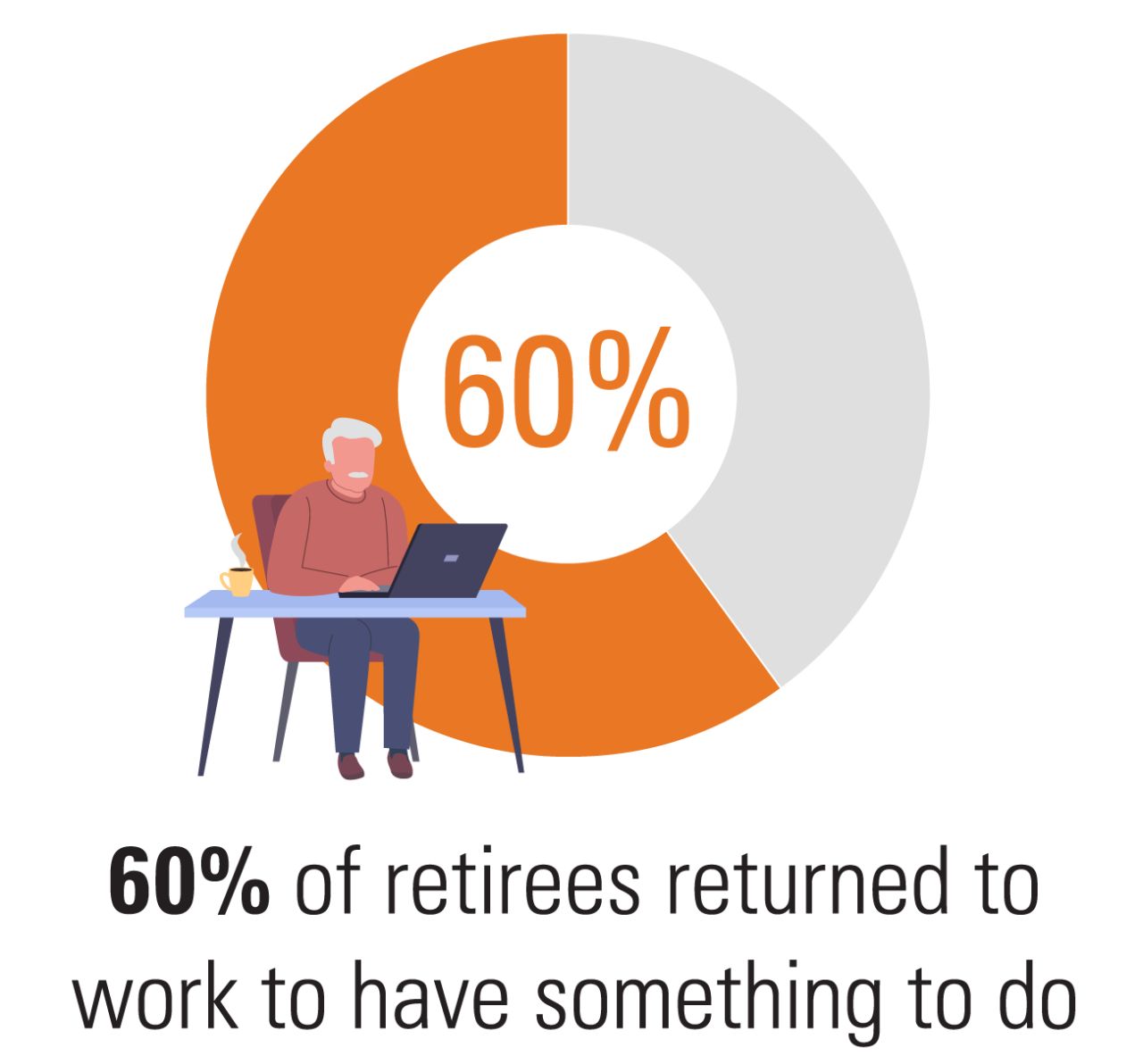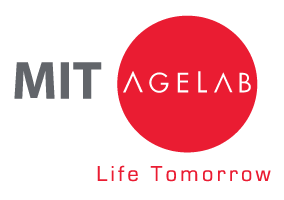
Source: Q2 2022 United States Job Market Report, Joblist, 7/11/22
Data shows that the quiet return to work of one-time retirees is at higher levels than before the spring 2020 alarm bells caused many to run for the exits.2 Why would retirees, who may have been living a life-of-leisure retirement dream, want to return to work?
Reasons for returning include what many might assume: money worries and the looming threat of inflation. Survey data from Joblist indicates that 27% of those quietly returning to work were doing so because they need the money, and another 21% fear that inflation is eroding their retirement nest egg.2 However, the primary reason for quietly returning is neither money nor inflation woes.
Many Retirees Are Looking for Something to Do
A full 60% of retirees returning to work said they were simply “looking for something to do.”3 According to Joblist CEO Kevin Harrington, “Many people struggle with how to spend their time after they retire and miss the social connection that work provides.”
While many scoff at the idea of work being more than a means to make a living, work serves other critical functions that go well beyond money. We’re very likely to spend more waking hours with our work colleagues than with our family and friends; consequently, work is a large part of our social world.
Work structures our days, if not always to our liking. But while life may seem short, days with nothing to do or without a sense of purpose can feel endless. And social isolation during the pandemic effectively became a fire drill for retirement planning because it created conditions that were similar to what many experience daily in retirement. Many of us discovered that we were far from prepared for unstructured days, weeks, and years no matter how long our to-do list was.
Good News for Employers
More than half (52%) of retirees quietly returning were happy to go back to work; 42% even said they were excited to clock in again.3 Like younger workers, retirees heading back to work were looking for flexibility. The vast majority (79%) wanted to work part-time.3 And, half of the respondents might make many employers’ hearts sing—they’re willing to work either in-person or remotely.3
Moreover, as Joblist’s Harrington comments, older workers quietly returning “could be good news for employers. Retirees are an overlooked talent pool that companies can and should engage to combat labor shortages.”
Returning to Work Can Be Challenging
That said, returning to work is not without some trepidation. Nearly 30% of retirees expressed nervousness, stress, and frustration about returning to work.3 Getting back into the rhythm of work after being retired can be challenging. Just consider how difficult it’s been for people of all ages to go back to the workplace after the pandemic.
Retirees returning to work may have multiple and compounding concerns. These might include feelings of being ”rusty” after being out of the workforce for a year or many years. How do you write a resume if potential employers may not care about your experience from decades ago? How do you prepare for an interview with someone your child’s or even your grandchild’s age? What’s appropriate compensation? And, sadly, many will confront a lack of acceptance by employers and younger colleagues in workplaces that may be rampant with ageism.
Despite these challenges, many companies are increasingly looking to attract mature workers, and with good reason. The labor market is still tight with two open jobs for every worker. Companies still find it challenging to recruit and retain talent. Research shows that older employees tend to have attributes that make them attractive to employers, such as being more engaged, more likely to look forward to work, more connected to their companies, and less likely to consider quitting.4
Some call those making this quiet return to work “unretired.” Not incorrect in phrasing, but incomplete in capturing the full impact of what those quietly returning may have on our social narrative of retirement. They are not simply unretired, they’re pioneers. These older adults are inventing something that’s neither our current idea of retirement nor work. They’re quietly creating something else—a new life stage altogether that sees the retirement age of today as a mile marker, not an exit.







